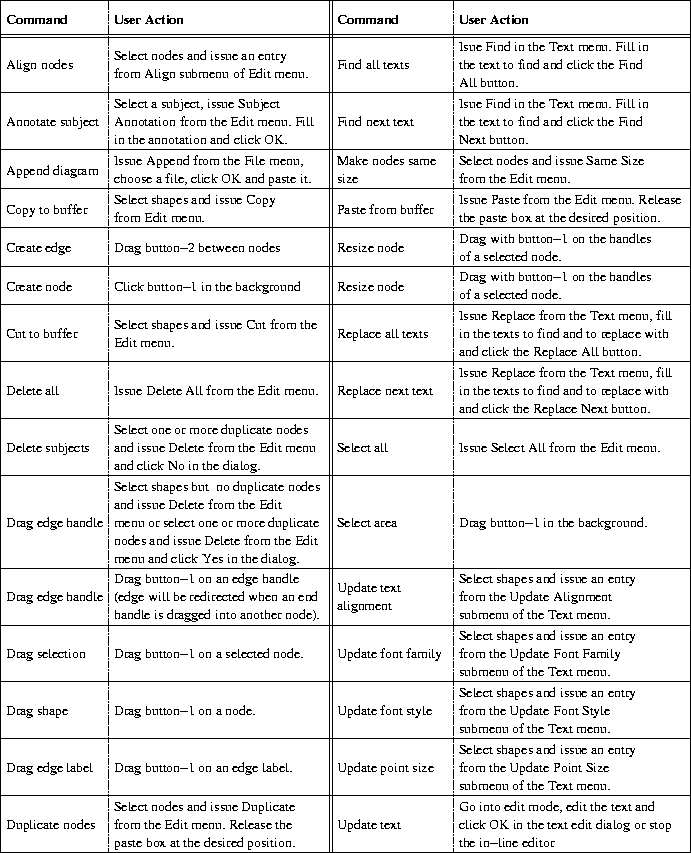




Next: 3.13 The Generic Diagram
Up: 3 Diagram Editing
Previous: 3.11 Other Edit Commands
The last issued edit commands can always be undone and, when undone, also redone
again. Undo is the first entry of the Edit menu (in the menu bar and
also under button-3). Undo has the accelerator <Ctrl+U>.
Undo is multiple levels deep. Redo is the second entry of the Edit menu
and has the accelerator <Ctrl+R>. You can redo the last undone
commands. Redo is also multiple levels. However, when you have undone a command
and then issued a new command then the undone command can not be redone anymore.
Both undo as redo show in their menu entry the name of the command that
can be undone respectively redone. In the current implementation the undo can
be several hundreds of levels deep, but when a new diagram is created by
Load or New, the undo history is deleted. When undo or redo is not possible,
the corresponding menu entry is shaded and can not be issued.
While you are busy with performing a command, like creating an edge, moving
the paste box or resizing or moving some shapes, you can abort the
command by clicking button-1 during edge creation or button-2
for the other commands. When you have aborted, nothing is changed and the
undo or redo of that command is not possible nor necessary and the undo menu
entry lists the command issued before the aborted command.
Figure 3.3 summarizes all atomic commands
by which you can edit the diagram. These commands are either issued by the mouse,
via the Edit or Text menu, or via an accelerator. Each of these
commands is undo- and redo-able.
Figure 3.3:
All atomic diagram edit commands.
 |





Next: 3.13 The Generic Diagram
Up: 3 Diagram Editing
Previous: 3.11 Other Edit Commands
Frank Dehne,Faculty of Mathematics and Computer Science, Vrije Universiteit Amsterdam
11/17/1997
